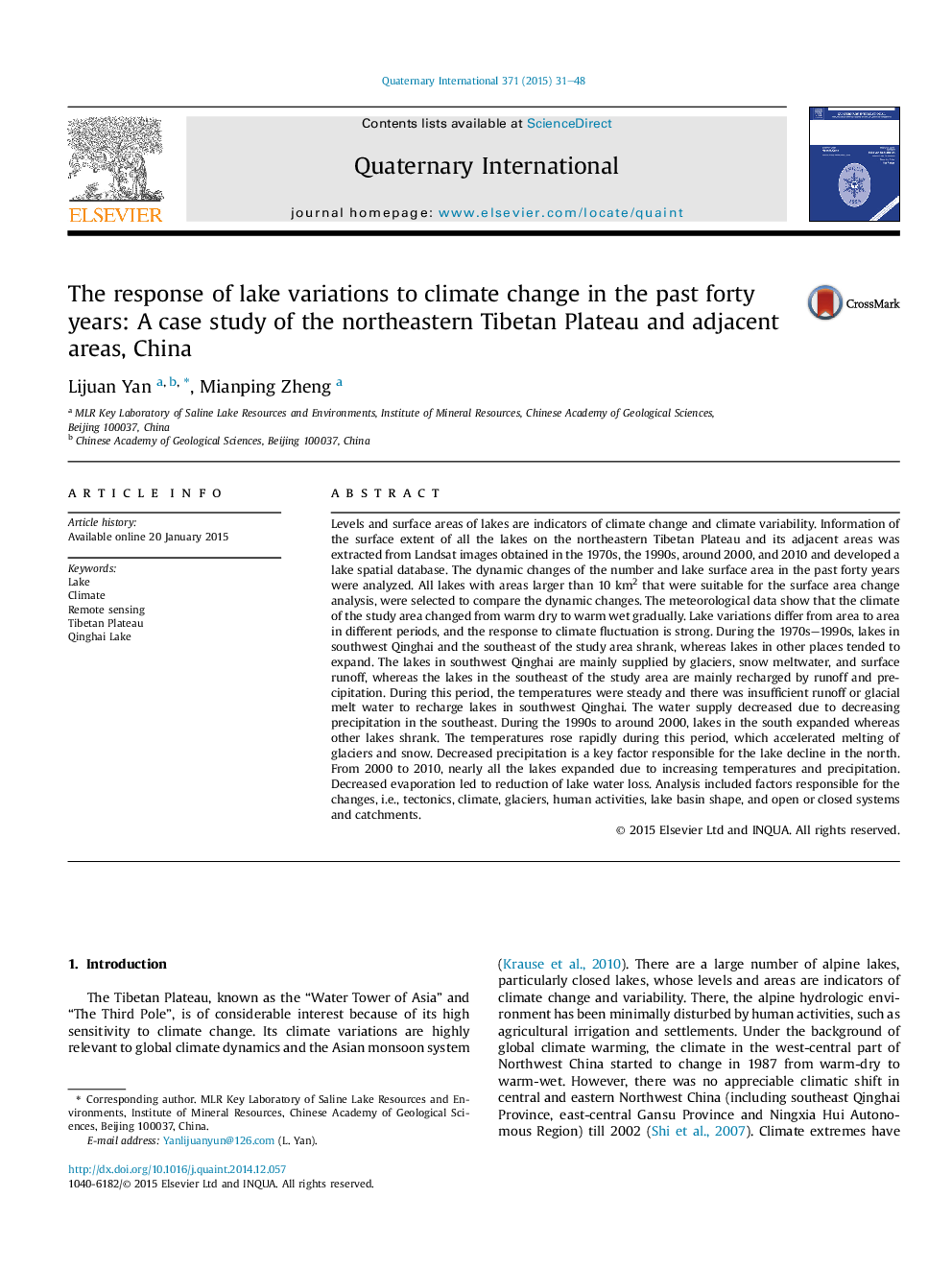| کد مقاله | کد نشریه | سال انتشار | مقاله انگلیسی | نسخه تمام متن |
|---|---|---|---|---|
| 1040776 | 1484126 | 2015 | 18 صفحه PDF | دانلود رایگان |
Levels and surface areas of lakes are indicators of climate change and climate variability. Information of the surface extent of all the lakes on the northeastern Tibetan Plateau and its adjacent areas was extracted from Landsat images obtained in the 1970s, the 1990s, around 2000, and 2010 and developed a lake spatial database. The dynamic changes of the number and lake surface area in the past forty years were analyzed. All lakes with areas larger than 10 km2 that were suitable for the surface area change analysis, were selected to compare the dynamic changes. The meteorological data show that the climate of the study area changed from warm dry to warm wet gradually. Lake variations differ from area to area in different periods, and the response to climate fluctuation is strong. During the 1970s–1990s, lakes in southwest Qinghai and the southeast of the study area shrank, whereas lakes in other places tended to expand. The lakes in southwest Qinghai are mainly supplied by glaciers, snow meltwater, and surface runoff, whereas the lakes in the southeast of the study area are mainly recharged by runoff and precipitation. During this period, the temperatures were steady and there was insufficient runoff or glacial melt water to recharge lakes in southwest Qinghai. The water supply decreased due to decreasing precipitation in the southeast. During the 1990s to around 2000, lakes in the south expanded whereas other lakes shrank. The temperatures rose rapidly during this period, which accelerated melting of glaciers and snow. Decreased precipitation is a key factor responsible for the lake decline in the north. From 2000 to 2010, nearly all the lakes expanded due to increasing temperatures and precipitation. Decreased evaporation led to reduction of lake water loss. Analysis included factors responsible for the changes, i.e., tectonics, climate, glaciers, human activities, lake basin shape, and open or closed systems and catchments.
Journal: Quaternary International - Volume 371, 12 June 2015, Pages 31–48
